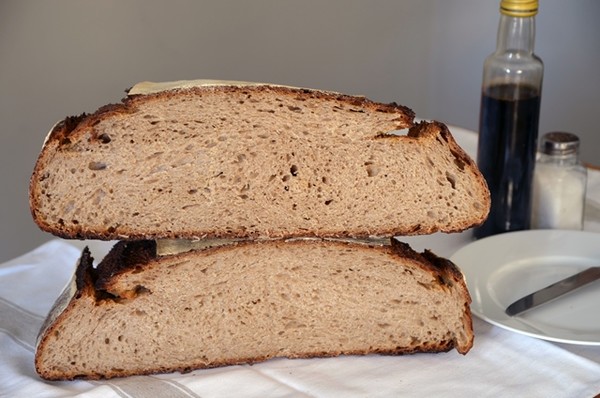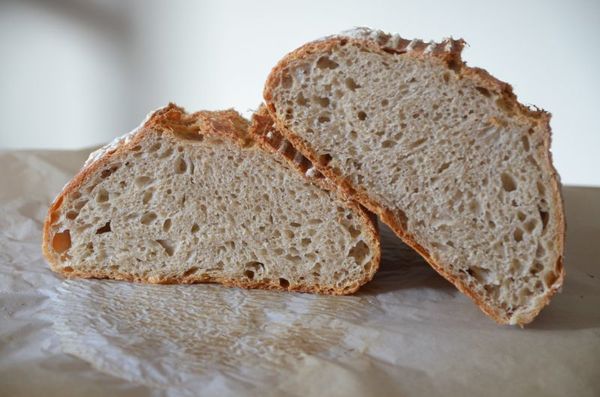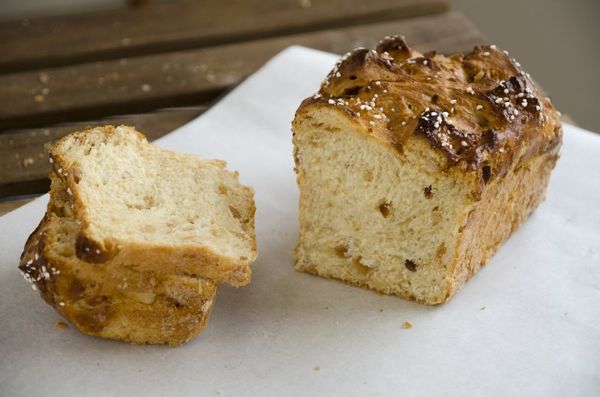Bread in the kitchen: reflections on the momentum of bread in restaurants
by Ibán Yarza (lamemoriadelpan.com, tequedasacenar.com)
I would like to conclude this series of collaboration with Sammic with some thoughts on the role of bread in restaurants. I would like these encouraging words to complement the recipes we have published over the last two months, designed especially for the restaurant sector.

The adventure that is bread, the adventure of making your own bread
Bread and cuisine, a dichotomy that is at times difficult to balance, when in reality there are few better indicators of the quality and the commitment of a restaurant than a basket of good bread, either home-made or bought in.
As a home baker, when I make bread the sense of challenge and the adventure envelops everything, like in the golden age of discoveries, or the most mythical of journeys. In this, I share with chefs who want to make their first bread the sensation of discovering new, untrodden terrain, an unknown land. As an explorer, it takes all my courage and resources, visualising myself as Amundsen setting foot on the South Pole for the first time or Hilary putting one foot in front of the other on the way to the summit of Everest, a place no human had ever been before. The anecdote (possibly apocryphal) of the recruitment advert for the ship Endurance, captained by Shackleton in the gold age of Antarctic exploration, that appeared in a newspaper in 1901.
“Men wanted for hazardous journey. Small wages, constant danger, bitter cold, long months of complete darkness, constant danger, safe return doubtful. Honour and recognition in case of success."
My personal experience helping small (or not so small) restaurants over the last two years is that paradoxically home baking (where I come from) is very similar to restaurant cuisine.
Like at home, what I have seen in many kitchens is that the chef/baker has to struggle with limited resources and adapt them; for example, inventing a fermentation chamber or turning their oven into a good breadmaking oven (in more than one restaurant I have had to apply home-made tricks for good steam that achieves proper development and good crusts in ovens designed more for turbot than for baguettes).
Moreover, for the chef (as well as the home baker) bread is not their main concern. Generally large quantities of bread are not needed, but rather a reasonable amount for daily service (and maybe a speciality that may be made in larger quantities and frozen so it is available throughout the week). Being able to organise the work is a big advantage, as well as the fact that (surprisingly) in the field of bread chefs are usually very open to suggestions, experimentation and training. In reality, they do not usually want to be bakers, they simply want to make a bread that is exceptional, unique and their own, just like their cuisine.

Barley bread made with Poolish
Changing the function of bread: need versus pleasure
In this regard, we have to think that, as a general rule, the customer does not usually go to a restaurant to fill up on bread. Luckily, we live in a society where (exceptions aside) we eat bread for pleasure. In the field of restaurants “bread for pleasure” is usually the only way to understand bread; its most gastronomic aspect. And this is where chefs praise bread, where they seek its ability to seduce and its singularity. All we need to do is consult bread consumption figures to see that in the last century we have gone from eating almost 1 kg of bread per person per day, to eating little more than 100 g. We don't “need” bread, so to speak; there isn't the nutritional necessity, but we eat it for the gastronomic pleasure. Not only that, our as patterns of consumption have changed, so have our tastes. In the midst of the XXI century we like variety; eating ciabatta one day, multigrain the next and a German rye bread the day after (before, our palate of ingredients was, forcibly, more limited; or the wine we had access to was very limited and one single type).
Needs versus pleasure; as much as our position has changed when faced with a piece of bread (in general, food). When we go through old recipe books, those recipe books forged in times of scarcity when it was necessary to sharpen one's inventiveness, we always find preparations that sublimate the modest ingredient or grasp close and unimaginable resources (such as the numerous recipes using cats in hard times). Remaining within our borders, we have the dubious honour of having the most endangered bird in Europe, the Balearic shearwater, which until recently populated the pages of the recipe books of the Pitiusa islands. There, the bird in question is called the virot. In the book Bon profit!, the Ibizan cookery book by Juan Castelló Guasch, you can read an enlightening passage that gives a good idea of subsistence eating.
VIROTADA - shearwater stew
In reality, the name virotada is applied to the whole action of hunting and seasoning the shearwaters, types of seagulls a little smaller than those found nowadays, that raised their young on the cliffs of la Mola (Formentera). Hunting them is a risky task typical of young, experienced people, as it is done by night, hanging by ropes off the crags, with a haversack hanging off their shoulders, in which they stuffed the birds, grabbing them from their nests and breaking their necks with their teeth. Suffice to say there were pecks aplenty, as these birds are strong and aggressive.
This leads us to think about the difference between mere feeding, nutrition, and gastronomy (the art of cooking, everything that surrounds it at the table; in this regard I have always found it funny how when the French say manger they take so much more for granted than mere chewing). Nowadays we usually go to restaurants for pleasure, to be seduced. Before, the seduction wasn't necessary: people were hungry.

Opportunities for bread in restaurants
We are in the midst of a marvellous golden moment for bread in restaurants. So much so that restaurants are using bread as their unique selling point, their appeal, their stand-out feature; from informal options such as Crumb in Madrid or The Loaf in San Sebastián, to prizewinning places such as St John in London, which among other things is a small shrine to bread.
Nowadays, when we look at restaurant menus in different places, at times there is the strange and uncomfortable sensation of repetition. This is where bread can be a unique selling point that distinguishes them and makes them individual (like making a commitment to quality in any other aspect of the gastronomic experience offered).
In recent decades, bread has undergone a process of demystification (much less bread is consumed, it receives much less respect, it has become banal, it is censored); bread is no longer "our daily bread". Nevertheless, bread still has a unique power to fascinate, more than any other food; simply think of the significance of bread in the collective subconscious in our culture or appeal to the subjective sensations and personalisation of the aroma and the crust of the bread in the first memories of our infancy.
I firmly believe that bread has a great power of seduction, of attraction, due to its long history in our culture, but also thanks to the new work, to the new options that modern technology gives us and the diversification of the flavours. The new and the old bread have their place, more than ever, in the kitchens of brave chefs who do not shy away from a challenge. It is time to keep making bread, without reinventing the wheel, repeating centuries old gestures, aware that tastes have changed and possibly also bread's place and role (which is not necessarily a bad thing). We have the means, the ingredients and the knowledge; let's apply them.
Iban Yarza recipes for Sammic:
Sliced bread made “from recycling”
Water bread made with mixer BE-10
Barley bread made with Poolish
Drozdzowka z makiem, Polish “yeast cake”
Clic here to download all the recipes.
